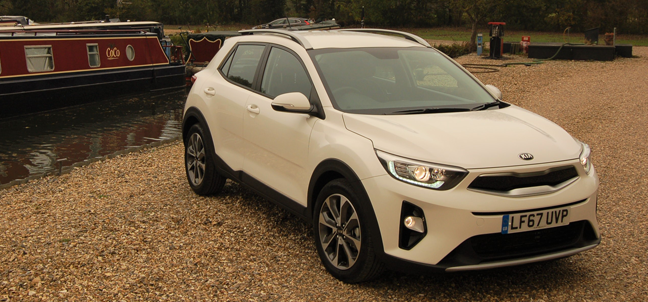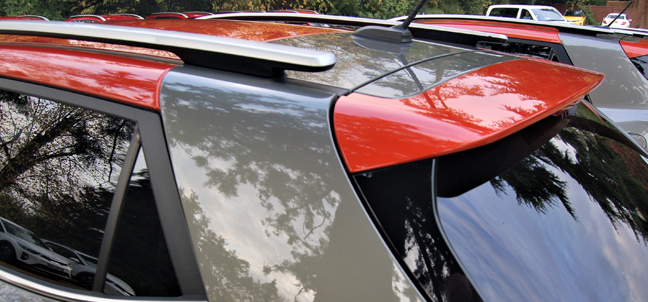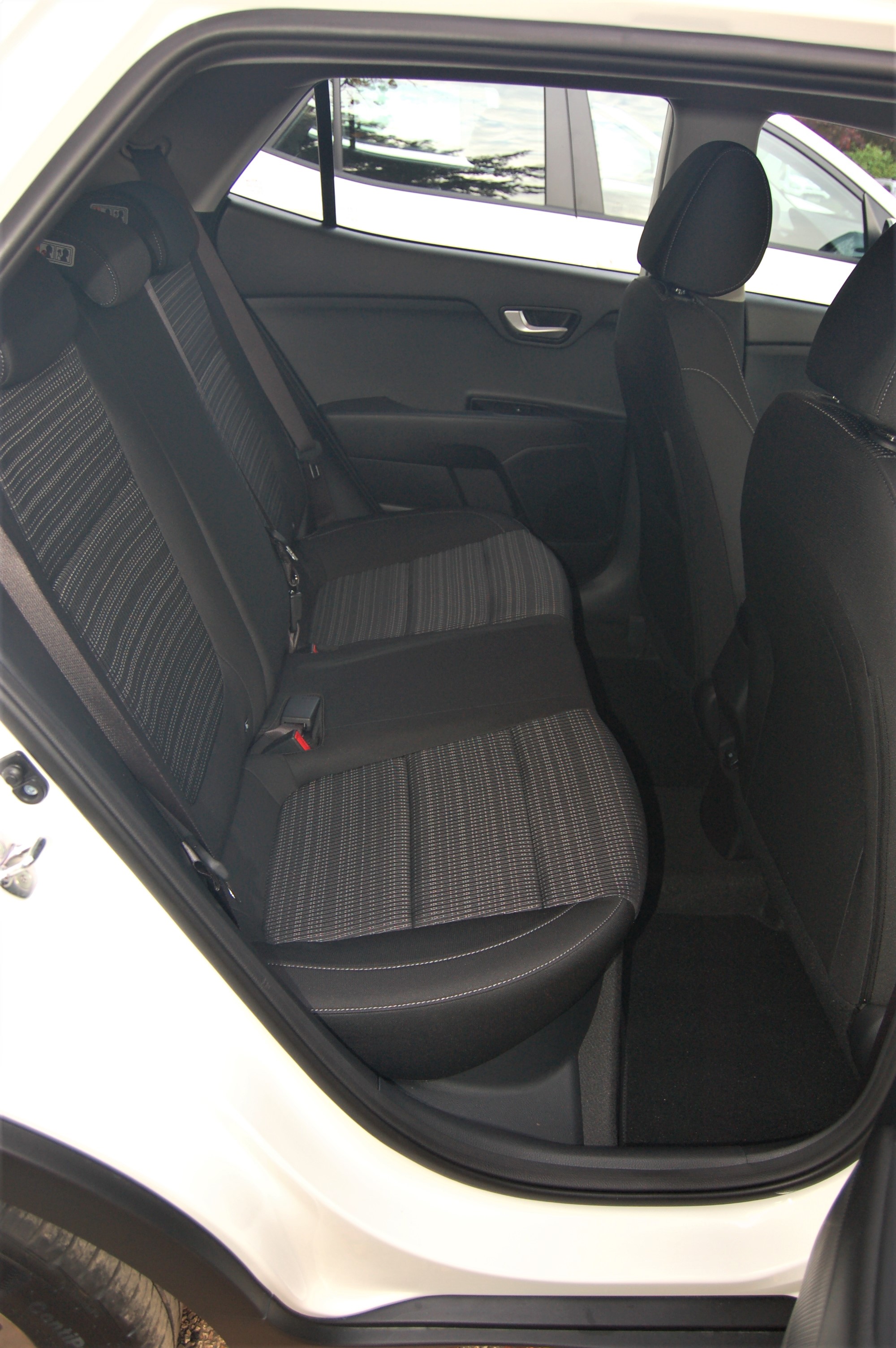Unbelievably, the latest Kia is breaking new ground. Yet, based on the Rio compact hatch model launched earlier in 2017 and built on adjacent production lines at the firm’s South Korean plant, it not merely meets modern motoring expectations, with an array of driver safety and semi-autonomous features, but also manages to introduce several intelligent design nuances, without badgering the motorist to the point of distraction.
Of course, its name is sure to generate headlines, keep your peepers peeled for ‘Superstonic!’, ‘Stonic the Hedgehog’ and ‘Gin & Stonic’. In the meantime, I shall stick with a more SEO-conscious header, fully aware that social media will do its thang and find appreciative potential for Kia around the world. Part of my logic lies in the fact that I was almost certain that Kia had played in this compact-SUV sector before…but it seems that my thoughts were wrong.

Intriguingly, as a late entrant to what is, without any doubt, the fastest growing and most hectic of automotive market sectors, I reckon that Kia ought to be crowing from the rooftops, because Stonic (soon to be ‘assisted’ by a similar model from the parent Hyundai stable) is a car that could command a huge share of that oh-so-busy market. There are some blindingly obvious reasons for such an escalated opinion.
Firstly, Kia has become a loved brand. Secondly, Kia has generated a powerful reputation for the engineering integrity of its products. Thirdly, its design is so head-turningly handsome that it will grab the attention of those people drawn to the uglier contenders in the class, while enticing those already attracted by the near-neutrality of the rest, because the Stonic complies with a desire for ordinariness, while displaying inimitable flashes of characterful brilliance. With an expected turnover of more than two million B-segment SUVs in Europe by 2020, Kia intends to carve itself a cool five per cent in annual registrations by that time. Yet, this is a car firm that has been traditionally conservative in its ‘guestimations’, which means that figure might be shattered easily.

The UK model line-up is simple: three engines (1.0t and 1.4i petrol and a 1.6 turbo-diesel), two trim levels (2 and First Edition). Prices start at £16,295, rising to £20,495 (not including FCD discount). The First Editions, recognisable by their two-tone paintwork, are packed to the gunwales with goodies, while £350 will buy the Autonomous Driver Assist Package (ADAP) on lesser models that includes emergency braking, lane departure warning, driver drowsiness warning and high beam headlamp assist.
Although I was unable to drive the 1.4i model, which is only available in the modest ‘2’ trim, it emits 125g/km CO2, develops a lowly 98bhp and, I suspect, with a 0-60mph time of 12.2s, a top speed of 107mph and an Official Combined fuel return of 51.4mpg, it is not going to attract much attention, even though its insurance rating is placed in Group 10, which helps to amortise some of the other overheads.

The 1.0-litre turbocharged unit is, at 118bhp, one of the punchier of the current crop of triple-cylinder tiddlers (prices start at £16,995). Effortlessly smooth, punchy across a wide rev-range, thanks to 126lbs ft of torque available from a low 1,500rpm to a peak of 4,000rpm and equipped with the sweetest, crispest and tidiest of 6-speed manual gearshifts known to man, it meets frugality expectations, with a reported 56.5mpg (on the OC cycle) and delivers strong performance. It will crack the 0-60mph sprint in a moderate 9.9s, before topping out at 115mph, a figure that coincides with its CO2 output of 115g/km (£160 road tax in year one, £140 annually thereafter).
To be fair, the diesel unit is not far off, despite the current antipathy shown towards oil-burners, and it is sure to score a few buyers even with an £800 premium over the petrol. For the record, it delivers 108bhp and 191lbs ft of torque, which ensures that its mid-range performance is still top notch. Its CO2 is lower (109g/km), while the fuel returns are significantly higher at 67.3mpg, although it cracks 0-60mph in 10.9s and posts a top speed of 112mph. It will take around three years of average motoring to amortise the extra cost implication, although the road tax is a consistent £140 annually.
While the diesel is the heavier option, the 1.0-litre tips the scales at 1.185 tonnes but it can tow a 1.1 tonne braked trailer. At just over four metres in length (4.14m), it is a compact car but its boot can carry 352-litres of items (the First Edition boot floor can be raised) with the rear seats in position; folded, the space is an excellent 1,155-litres, which is certainly more than enough for the average family use, although the optional roof rails are likely to be called into service for driving vacations.
Stonic falls judiciously into the sportier end of the SUV equation. Despite its typical ‘bolstered’ appearance, with wheelarch, side sill and fore and aft ‘protection’, it is stoically front-wheel-driven, without a 4x4 option. Its slabby flanks are disguised cleverly by the ‘kink’ in the side protection strip, just ahead of the rear wheels, and the dominant C-pillar coincides with the rear roof-bar supports but also slices across what might be a black, lime green, red, or orange optional roof colour (standard with the First Edition).

Should the roof colour be specified, the same contrasting colour is accented in the cabin, by stitching in the upholstery, the surround to the centre console and another trim section around the touch-screen above it. The rest of the interior is eminently attractive, with a neatly accented steering wheel (flat-bottomed in First Edition) and plenty of convenient storage slots. One of them is within the centre console, which is split into rubber-based upper and lower sections (helps to reduce rattles and annoying sliding noises), with the transverse divider carrying the USB and power ports. Not being buried within the dashboard means that they are both easier to identify and use; a significant benefit.
Despite the use of hard plastics, there is enough variation in the surface mouldings, allied to the different colour shades, to create interest and avoid criticism. Every element of the switchgear and controls is of a higher order and a perfect fit, which helps to raise the overall impression of the Stonic’s value proposition. Good connectivity, with instant Bluetooth links to both android and Apple mobile devices, is a measure of the design priority taken with the car. Its front seats are usefully bolstered for added comfort and to keep occupants within their perches, when indulging in the car’s handling potential. The flatter rears look shapeless and can suffer from a lack of legroom, if the front chairs are pushed fully rearwards, although three people can sit abreast.

On the road, the Stonic uses its performance spread efficiently. Its ride quality is moderately firm but compliant damping ensures that it seldom ‘crashes’ into potholes and road surface imperfections. Body roll is also well-controlled and the power steering is pin sharp and direct, without being nervous. The ‘feel’ through the steering wheel is excellent and feedback is fluent. Although it does need to be worked, the 1.0-litre is the zestiest unit by far, although, as mentioned earlier, the diesel delivers a better mid-range punch. Refinement levels are excellent.
Kia never ceases to fascinate me. The Stonic could have been an outrageous attention-grabber, instead, it is a smartly attired and very enjoyable motorcar. Available in a good choice of youthful colours and two-tones, it is of a style that will prove beguiling to a wide mix of customer types and ages. Being priced keenly also helps its case and, what should have been a European-only model has also been adopted by Kia for its home market.